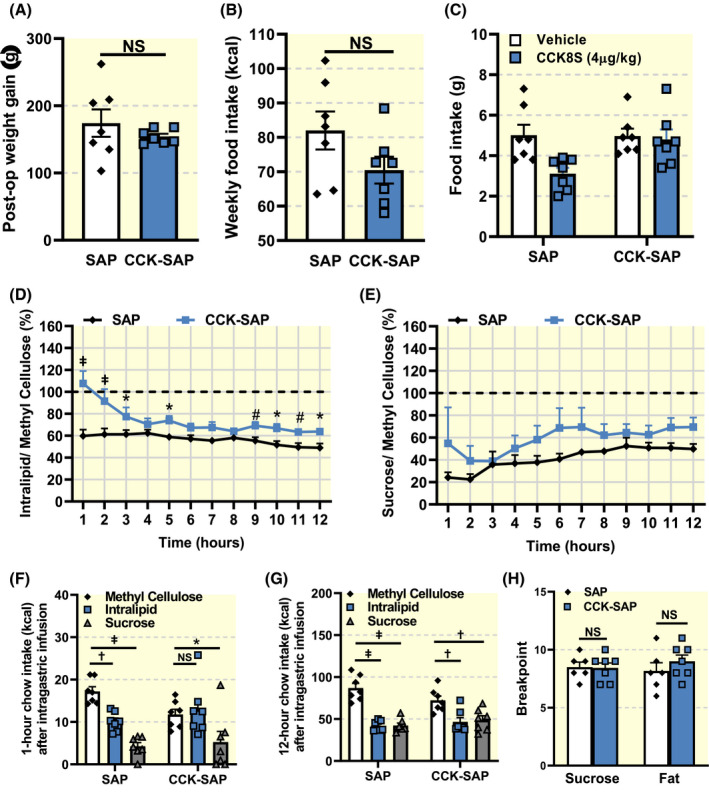FIGURE 5.

Vagal deafferentation causes inhibition of lipid‐mediated satiation. A, Weight gain was similar between groups (n = 7, two tailed unpaired t‐test, P = .3612). B, Chow intake was not significantly different between groups (n = 7, two tailed unpaired t‐test, P = .1149). C, 1 hour food intake in response to i.p. CCK (4 µg/kg) was reduced in SAP, but not in CCK‐SAP‐treated rats (n = 7, two way RM ANOVA, Interaction F(1,12) = 6.392, P = .0265, Holm‐Sidak post hoc analysis † P < .01). D, SAP but not CCK‐SAP animals reduce food intake following intra‐gastric pre‐load of lipids (n = 7, two way ANOVA Interaction F(11,132) = 4.003, P < .0001, Benjamini and Hochberg post hoc analysis with FDR of 0.05 # P < .06, *P < .05, ‡ P < .001). E, Both SAP and CCK‐SAP animals reduce food intake following intra‐gastric pre‐load of sucrose (n = 7, two way ANOVA Interaction F(11,132) = 0.6730, P = .7619, Benjamini and Hochberg post hoc analysis with FDR of 0.05, NS). F, Caloric intake 1 hour after intra‐gastric pre‐load of methyl cellulose, fat or sugar (n = 7, two way ANOVA, Interaction F(2,24) = 3.878, P = .0347, Dunnett's post hoc analysis, *P < .05, † P < .01, ‡ P < .001). G, Caloric intake 12 hours after intra‐gastric pre‐load of methyl cellulose, fat or sugar (n = 7, two way ANOVA, Interaction F(2,24) = 4.944, P = .0159, Dunnett's post hoc analysis, † P < .01, ‡ P < .001). H Breakpoint in the progressive ratio licking test was unchanged across groups irrespective of macronutrient reward (n = 7, Two‐way RM ANOVA, Interaction F(1,8) = 0.8037, P < .05, Holm‐Sidak post hoc analysis, NS)
